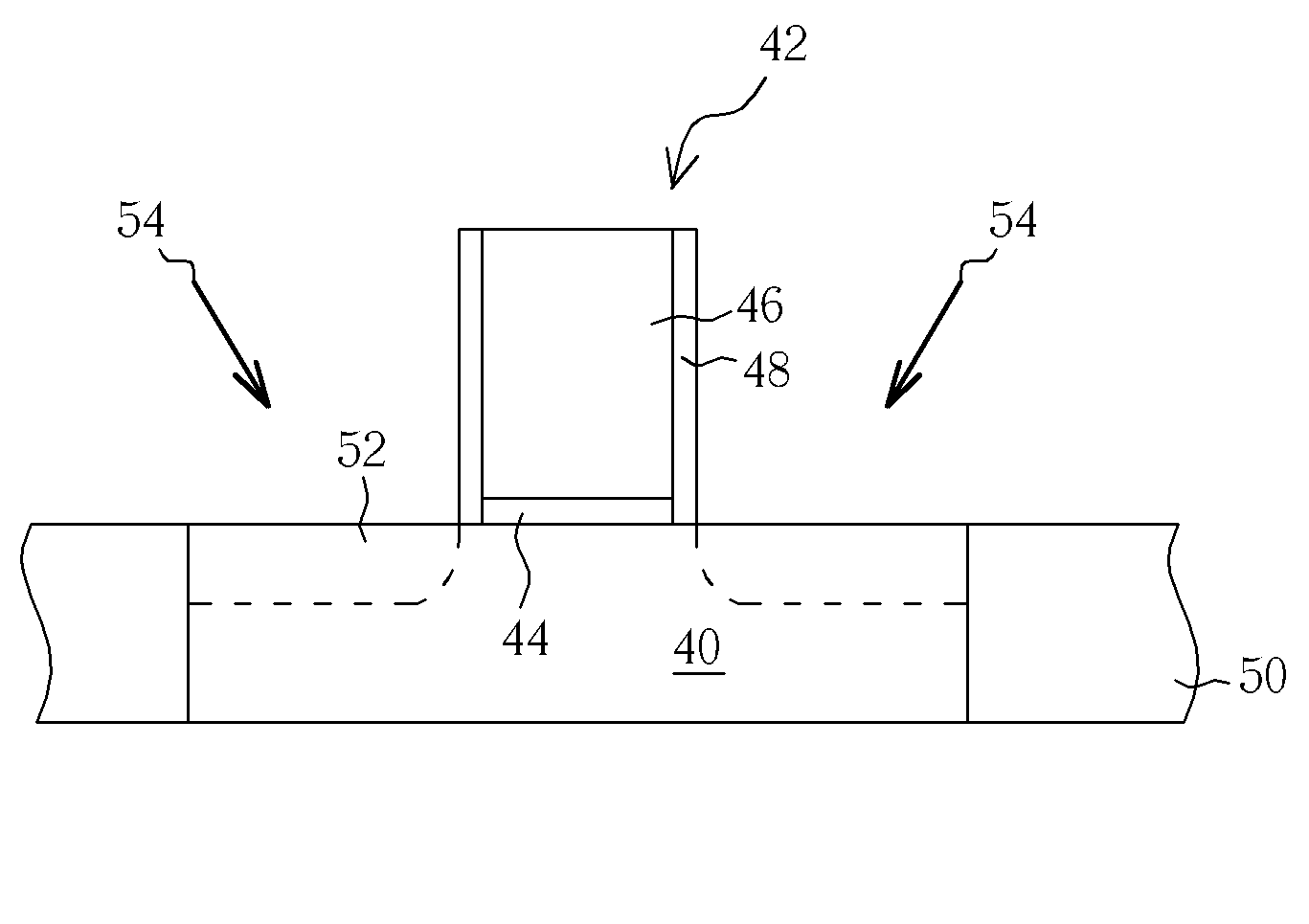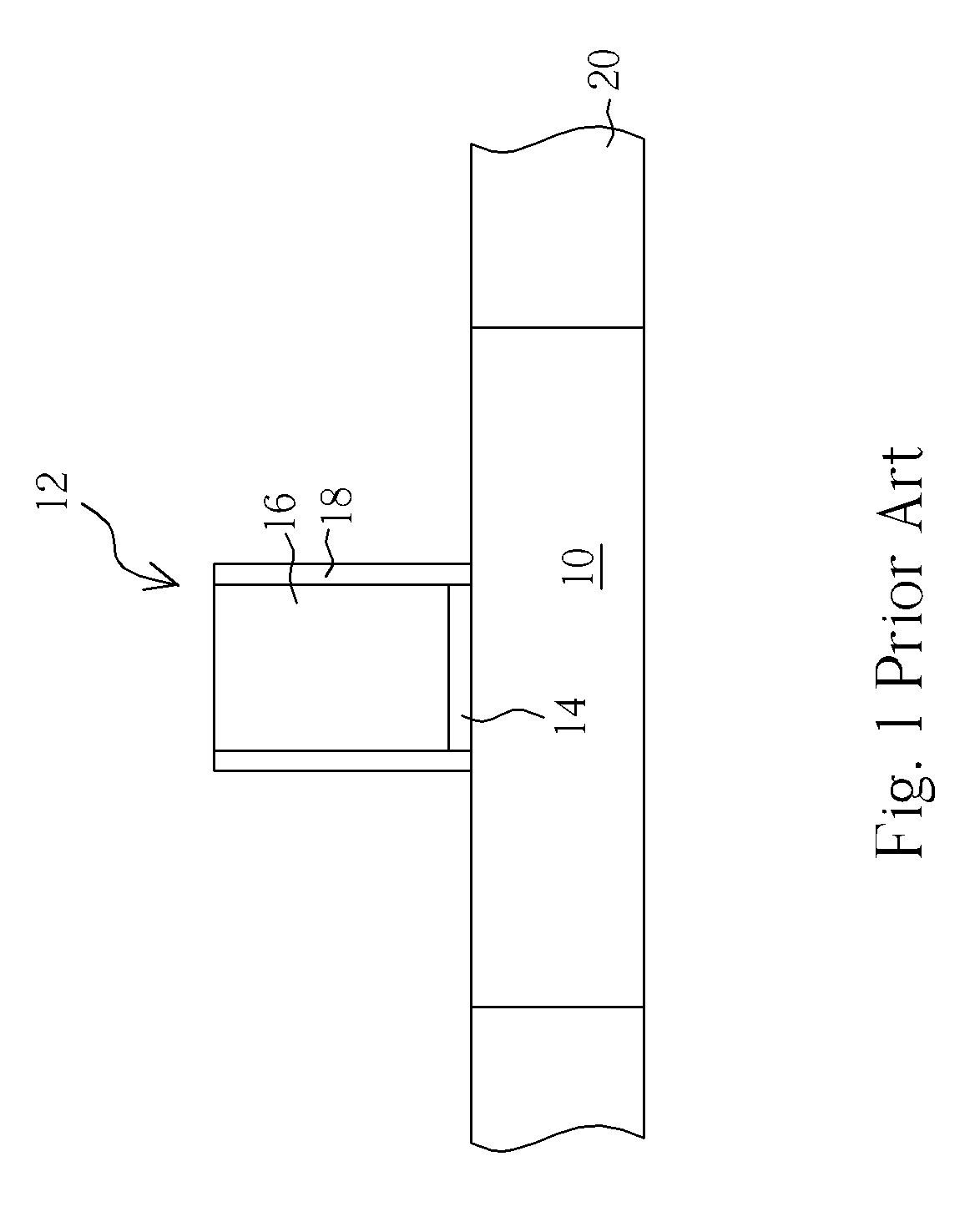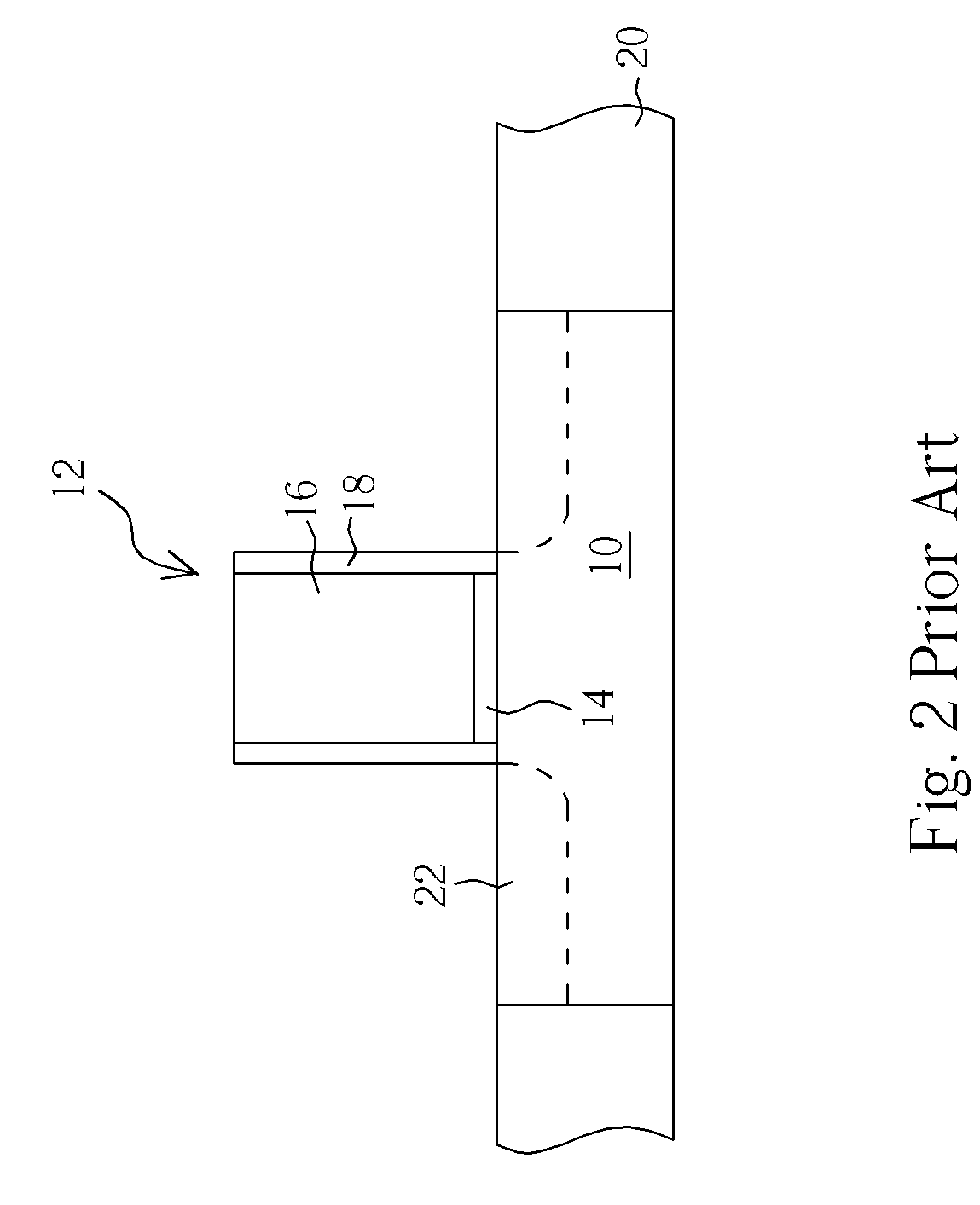Method for fabricating an NMOS transistor
- Summary
- Abstract
- Description
- Claims
- Application Information
AI Technical Summary
Benefits of technology
Problems solved by technology
Method used
Image
Examples
Embodiment Construction
[0022] Please refer to FIGS. 6 through 11. FIGS. 6 through 11 illustrate a method for fabricating an NMOS transistor according to the present invention. As shown in FIG. 6, a substrate 40 having a gate structure 42 thereon is provided. The substrate 40 is preferably a wafer or a silicon on insulator (SOI) substrate, and the gate structure 42 is composed of a gate dielectric 44 and a gate 46. An offset spacer 48 is formed on the sidewall of the gate structure 42, and a shallow trench isolation 50 is formed surrounding the region outside the active area of the NMOS transistor.
[0023] As shown in FIG. 7, an amorphorized implantation process is performed with atoms smaller than silicon to disorder the polysilicon lattice of the substrate 40 for forming an amorphorized region 52 surrounding the gate structure 12. According to the preferred embodiment of the present invention, the implant species used for the amorphorized implantation may include any atom smaller than silicon, such as car...
PUM
 Login to View More
Login to View More Abstract
Description
Claims
Application Information
 Login to View More
Login to View More - R&D
- Intellectual Property
- Life Sciences
- Materials
- Tech Scout
- Unparalleled Data Quality
- Higher Quality Content
- 60% Fewer Hallucinations
Browse by: Latest US Patents, China's latest patents, Technical Efficacy Thesaurus, Application Domain, Technology Topic, Popular Technical Reports.
© 2025 PatSnap. All rights reserved.Legal|Privacy policy|Modern Slavery Act Transparency Statement|Sitemap|About US| Contact US: help@patsnap.com



